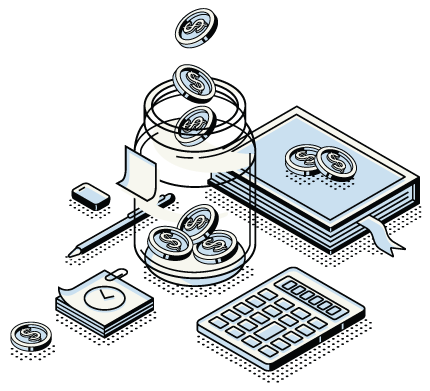Credit Basics
This is your ultimate resource for credit reporting, credit cards, bankruptcy, collections, and all things related to improving your credit score and keeping your hard-earned money in your own pockets!

The Fastest Legal Way to Rebuild Your Credit After a Setback
If you’ve been through bankruptcy, collections, or just plain bad luck — this free guide shows you how to rebuild fast, the right way.
Get the Three-Day Strategy: A Quickstart Guide for Improving Your Credit Score FAST and see how thousands are rebuilding their credit score in as little as 12 to 24 months.
About 7 Steps to a 720 Credit Score
How can I enroll in 7 Steps to a 720 Credit Score?
There are three ways to access 7 Steps to a 720 Credit Score.
- Join the Credit Rebuilder Program: This is the fastest way to rebuild your credit score. The Credit Rebuilder Program includes full access to the 7 Steps to a 720 Credit Score course and takes it a step further by reporting your on-time payments to the credit bureaus. Plus, you’ll get legal support if your rights have been violated, which means you might be eligible for financial compensation. You can join the Credit Rebuilder Program here.
- Work with a Participating Bankruptcy Attorney: If you have been through a bankruptcy, your attorney might include 7 Steps to a 720 Credit Score as part of their services. Click here to see the directory of bankruptcy attorneys who enroll their clients in 7 Steps to a 720 Credit Score. If your attorney doesn’t offer 7 Steps to a 720 Credit Score, click here to ask them to subscribe to 7 Steps to a 720 Credit Score.
- Complete Your Debtor Education Course Through Evergreen: If you take your post-bankruptcy debtor education course through Evergreen Financial Counseling, you’ll automatically receive access to the 7 Steps course upon completion—no extra cost, no strings attached.
What will I learn in this course?
We cover everything from how credit scores are calculated to which types of accounts help you the most. You’ll learn how to rebuild your score after bankruptcy, avoid common mistakes, and understand your rights.
Want hands-on help? The Credit Rebuilder Program gives you a guided path, with real results in as little as 6 months.
How long will it take to improve my credit score?
You’ve probably heard it takes seven years. It doesn’t. Most students start seeing a real jump within 12 to 24 months. With consistent effort, a 720 score is possible in under two years, even after bankruptcy.
Want to fast-track your results? Our Credit Rebuilder Program is designed to rebuild your score as quickly as possible, sometimes in as little as six months
Stop Letting the Banks Profit Off Your Past
Every month that you wait, the banks are winning by raking in profits from high interest rates and late payment. They’re hoping you never figure out how to fight back.
This video shows you how to rebuild credit and flip the script.
Success Stories
Bankruptcy and Your Credit Score
Credit Cards and Your Credit Score
Credit Scoring
Credit Rebuilder
Errors and Your Credit Score
Charge Offs and Your Credit Score
Student Loans and Your Credit Score
Home Loans and Your Credit Score
FAQs
-
FAQ: What is a credit score?
A credit score is a three-digit number that shows lenders how likely you are to repay borrowed money. It typically ranges from 300 to 850, and the higher the score, the better your chances of getting approved for credit with favorable terms.
Most people use the FICO scoring model, which calculates your score based on these factors:
- Payment history (35%): Have you paid your bills on time?
- Credit utilization (30%): Are you using too much of your available credit?
- Length of credit history (15%): How long have you had your accounts?
- Credit mix (10%): Do you have a variety of credit types, like credit cards and loans?
- New credit inquiries (10%): Have you applied for a lot of new accounts recently?
Think of it like a financial GPA: it measures your behavior over time, not just one test.
In the 7 Steps to a 720 Credit Score free credit-education program, we help people break this down even further. Most of our students have no idea how the scoring formula works when they begin, but once they understand it, they’re shocked at how quickly they can rebuild, even after a bankruptcy.
-
FAQ: What is a good credit score?
A good credit score usually starts at 700 on the FICO scale, but many lenders reserve their best rates for scores above 720.
Here’s a general breakdown:
Score Range Description 720 or above Your credit is excellent. You’ll qualify for just about any loan, and you’ll get the best interest rates available. 700 – 719 Your credit is very good. You’re seen as a low-risk borrower and will likely be approved, but you might not get the absolute best rates. Raising your score just a few points could help. 660 – 699 Your credit is in decent shape, but it’s not top tier. You might get approved if the rest of your application is strong, but you’ll likely miss out on the lowest rates. Some lenders may turn you down. 620 – 659 Your credit is borderline. You might still qualify, but you’ll probably face higher interest rates and less favorable terms. Lenders will look closely at the rest of your application. Keep in mind, different lenders have different standards. A credit card company may approve you with a 680, while a mortgage lender might want to see 720 or higher to give you the best interest rate.
One thing we emphasize in 7 Steps to a 720 Credit Score is that “good” isn’t just a number: it’s about opportunity. For many people, moving from the 600s into the 700s opens doors they thought were closed: car loans, mortgages, and even vacations paid for by credit card miles and rewards.
-
FAQ: What affects your credit score the most?
The single biggest factor affecting your credit score is payment history. If you pay your bills late, or miss them altogether, your score will take a hit.
Here’s how the major FICO categories break down:
- 35%: Payment history
- 30%: Credit utilization
- 15%: Length of credit history
- 10%: Credit mix
- 10%: New credit inquiries
In plain terms: Pay on time, use a small percentage of your available credit, and avoid applying for too much credit at once.
Many people assume paying off debt will automatically boost their score, but it’s more nuanced than that. If you pay off and close a credit card, your utilization might spike and your score could dip temporarily. In our free credit-education program, 7 Steps to a 720 Credit Score, we teach people how to work with the formula, not against it. For example, we recommend keeping your old cards open and using them every month, then paying them off right away. We’ve seen people jump 30–50 points in just a few months by shifting a few simple habits.
-
FAQ: What is a good credit score for a college student?
There’s no separate credit scoring scale for students. Whether you’re 18 or 80, a good credit score is the same: generally 700 or above, with anything over 720 being a great credit score.
That said, many college students are just starting to build credit, so it’s normal for them to have lower scores, not because they’ve done anything wrong, but because their credit history is young. According to Experian, the average Gen Z credit score was 679 in 2023.
In 7 Steps to a 720 Credit Score, our free credit-education program, we help young people get a head start by showing them how to use credit responsibly from day one. We teach strategies like keeping utilization low, paying on time, and only opening accounts that serve a purpose. We’ve had students as young as 18 boost their score over 720 just by following the plan.
If you’re a student, focus on learning the rules early. A strong credit score can make life a lot easier when you graduate, whether you’re getting an apartment, financing a car, or landing a job that pulls your credit report.
-
FAQ: How does credit utilization impact my score?
Credit utilization refers to how much of your available credit you’re using, and it’s one of the most important factors in your credit score, making up 30% of your FICO score.
Here’s how it works: If you have a credit card with a $1,000 limit and you’re carrying a $500 balance, your utilization is 50%. The higher that percentage, the more it can drag your score down. A high balance-to-limit ratio tells the credit-scoring bureaus that you may be having a hard time keeping afloat, and that you are turning to credit cards to pay for day-to-day expenses. A low utilization rate, on the other hand, tells lenders that you have plenty of income to cover your expenses.
Most experts recommend keeping your utilization below 30%, but if you want to see real improvement, aim for under 10%.
Here’s the key: Utilization is calculated per account and across all accounts. That means even if your total utilization is low, having one maxed-out card can still hurt your score.


